#christian tetzlaff
Text
Final part #6 of a monster CD comparison project that "digested" a big pile of CDs in my shelves.
---
Media review — Bach: Partita No.3 in E major for Violin Solo, BWV 1006 — a comparison of 25 artists / 26 recordings, from historic to HIP: with Menuhin (1936), Szigeti (1956), Grumiaux (1961), Szeryng (1967), Kremer (1980), Zehetmair (1982), Schröder (1985), Paternoster (1995, cello), Huggett (1997), Podger (1999), Kremer (2001), Tetzlaff (2005), Mullova (2008), Baráti (2009), Faust (2009), Ibragimova (2009), Khachatryan (2009), Beyer (2011), Pietsch (2011), Busch (2012), Bohren (2017), Carmignola (2018), Pochekin (2018), Aldemir (2019, viola), Cotik (2019), Hadelich (2020)
Blog post #637
#rolfsmblog#js bach#bach#violin#violin solo#solo partita#solo violin#partita#review#comparison#cd comparison#pochekin#christine busch#isabelle faust#amandine beyer#gidon kremer#rachel podger#christian tetzlaff#viktoria mullova#alina ibragimova#mikhail pochekin#atilla aldemir#tomas cotik#augustin hadelich#sebastian bohren#sei solo
1 note
·
View note
Text
#1 best way to feel invested in your bach interpretation is to listen to anyone else play it…will have you saying “bro what the hell are you doing” and such things
#I love u christian tetzlaff but this is not it…..#personal#classical music#there are some beautiful moments. but what!!!! stop fucking stabbing notes you’re not on a pogo stick
6 notes
·
View notes
Link
In February 2021, Lars Vogt probably should not have traveled to Bremen, Germany, to join his close friends, the violinist Christian Tetzlaff and his sister, the cellist Tanja Tetzlaff, in recording Schubert’s Piano Trio No. 2 in E flat. Vogt, a widely beloved pianist and a conductor on the rise, arrived in pain; his doctors had asked him not to go, but to check into a hospital to await a conclusive diagnosis of the cancer that would take his life, at just 51, last September.
Instead, Vogt sat down at a keyboard.
“He did the most incredible things,” Christian said in an interview, adding that Vogt, his colleague of 26 years, suddenly played as if he had reached a kind of fulfillment or liberation. “Even on a technical level,” he continued, “I’d never heard him in this kind of perfection, exuberance, lightness. He was everything at the same time.”
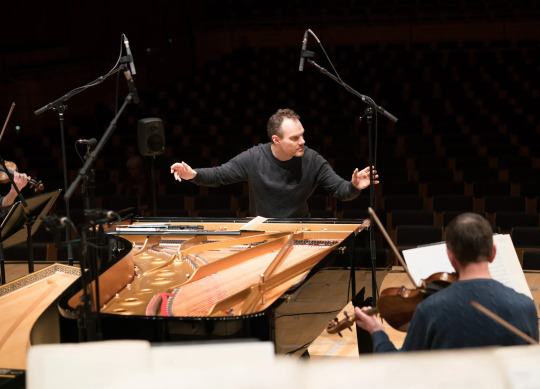
9 notes
·
View notes
Text
0 notes
Text
Staatsorchester Stuttgart - Cornelius Meister e Christian Tetzlaff
Foto ©Staatsorchester Stuttgart/FB
Bela Bartók e Gustav Mahler erano gli autori in programma per il penultimo concerto della stagione sinfonica della Staatsorchester Stuttgart,
Continue reading Untitled
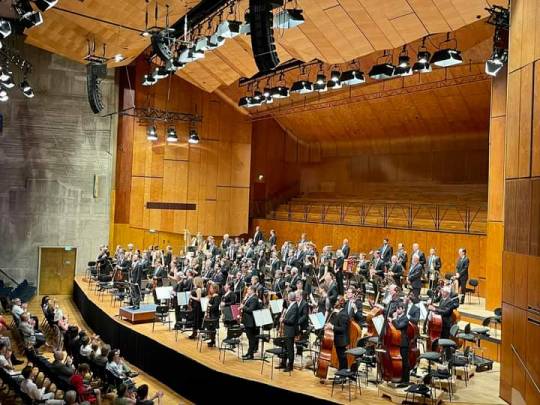
View On WordPress
#bartok#cornelius meister#critica#liederhalle#mahler#novecento#sinfonica#staatsorchester stuttgart#strumentale#stuttgart#tetzlaff#violino
0 notes
Text
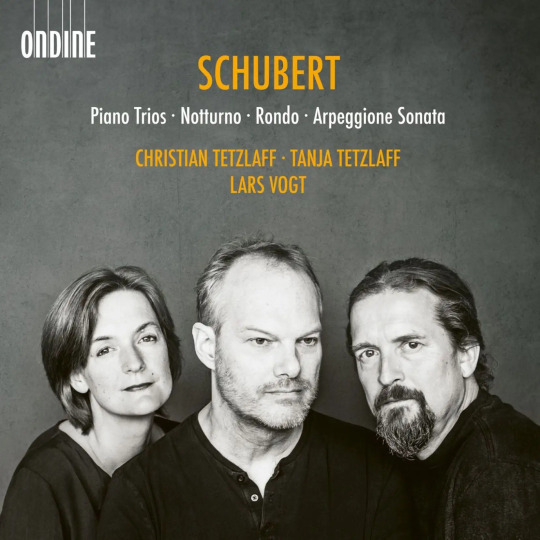
Le goût de la musique : Schubert sublime dans la tragédie la plus crue de la vie par Christian Tetzlaff, Taja Tetzlaff este Lars Vogt...
0 notes
Text
COUCH TOUR: CHRISTIAN TETZLAFF/TANJA TETZLAFF/KIVELI DORKEN, 92nd ST Y, 28 MARCH 2023
Piano trios are my preferred chamber music ensemble and I became aware of the Tetzlaffs when I read the obituary for pianist Lars Vogt in September. KIVELI DORKEN was Vogt’s student so she has stepped into her mentor’s slot in this trio. But, preferred or not, I don’t see trios enough, so my ear was a little rusty even though I carpe-d this opportunity diems in advance.
This was semi-familiar material. Beethoven’s Opus 1, No. 3 when I know Archduke pretty darn well and Ghost reasonably so. Dvorak’s #2 which maybe was the one I went to after just not getting Dumky (except the last time it made more sense, even if I haven’t made it familiar). Schubert #1 when it’s definitely #2.
It took the Beethoven to get my bearings, but having watched it a second time, it may have not been just me. Maybe it was the room which seemed rather bright and maybe it was the others getting to know a new pianist. But, on second hearing, I wonder if it just reflected an earlier stage of the development of the form and maybe even the composer. These are from 1795, so LvB was 24. It’s definitely him, but it’s more formal and just less chamber-ish. The lines just don’t weave in and out as much. Everyone has a position, the piano in particular, and they all hold theirs admirably. But it didn’t quite breathe.
Even the first time through, the Dvorak drew me in. I read after the fact that it was written after the death of a daughter in 1876. It never was explicitly a memorial and, instead, it is said to anticipate the Slavonic Dances. So I heard that side more than the funereal. Certainly TANJA TETZLAFF wove around a more nimble piano part for Dorken and brother CHRISTIAN’s fiddle. They were deft and experienced with one another, but I’m a sucker for cellos so her pizzicatos and countermelodies stood out. The third movement had an intensity but the fourth really was dance-like.
In real time, my concentration flagged for the Schubert. There was a brightness to the piano, a dance quality from Christian in the fourth, and the cello leading the way in the second. His #2 trio really is quite remarkable in scope. This one is awfully good and, together, by the late 1820s the form has developed since Beethoven’s early works. He precedes Mendelssohn’s by more than a decade, so he may deserve the credit for opening the path to the interplay that I value.
Christian’s violin playing was strong and well attuned to his sister. I do think Dorken didn’t quite fill the very big shoes she was asked to. That the room was so acoustically bright, it might have disadvantaged a young pianist’s adjustment to the ensemble.
I though treasured this opportunity to commune with the form in the presence of such works and such players. I need to do it more often, both for the sake of this music, but also it should benefit my jazz listening too.
0 notes
Text
Christian Tetzlaff And Lars Vogt - In Recital - 2015 - Past Daily Mid-Week Concert
Christian Tetzlaff – Lars Vogt – truly, The Dynamic Duo.
https://pastdaily.com/wp-content/uploads/2023/03/Tetzlaff-Vogt-Recital-2015.mp3
Christian Tetzlaff, violin – Lars Vogt, Piano – Recital – RNE Radio Clasica – December 4, 2015 –
Over to Barcelona this week for a recital by Christian Tetzlaff and Lars Vogt in an all-Brahms program, recorded on December 4, 2015 by RNE Radio Clasica.
The…
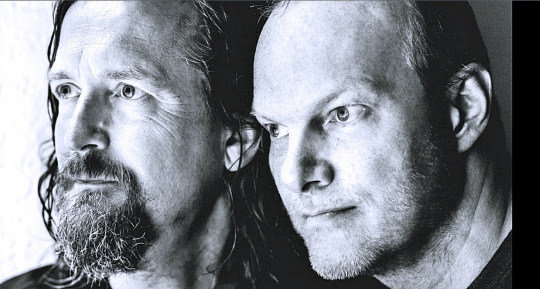
View On WordPress
0 notes
Text
what is it about german violinists? anne-sophie mutter, julia fischer, augustin hadelich, and—my all time favorite?—christian tetzlaff. s2g something’s in the water over there.
1 note
·
View note
Text
Je pianiste Lars Vogt est décédé en septembre dernier. Son cancer avait été diagnostiqué en 2021, et il était déjà malade lorsque, contre l'avis des médecins, il s'était rendu à Brême pour commencer ces enregistrements Schubert avec ses collaborateurs de longue date, le violoniste Christian Tetzlaff et sa soeur violoncelliste Tanja. Ils ont commencé avec le trio en mi bémol hanté par la mort, D929, avec son deuxième mouvement de marche funèbre, et ont enregistré le trio en si bémol, D898 quatre mois plus tard. Dans les notes de pochette du set, les Tetzlaff discutent du contexte des sessions, rendant un hommage touchant à leur ami et à sa musique : "Je trouve que dans l'enregistrement", dit Tanja, "on remarque qu'au fond de lui il savait déjà que selon toute vraisemblance, il n'allait pas pouvoir vivre très longtemps.L'œuvre de Schubert : Les trios avec pianoEt aussi beau que soit le jeu des Tetzlaffs, c'est à juste titre le jeu merveilleusement discret, rythmiquement net et jamais autoritaire de Vogt qui semble caractériser ces performances exceptionnelles, de ses pianissimos silencieux aux triples fortes les plus puissants. Les cordes correspondent également à sa merveilleuse gamme dynamique; la musique coule naturellement, sans un moment d'artifice ou d'artificialité, ni aucun soupçon de sentimentalité.Il y a aussi de la place sur les disques pour d'autres pièces tardives de Schubert, y compris le Sublimely simple Notturno for Piano Trio, D897; le Rondo pour violon et piano, D895, et la Sonate pour arpeggione, qui est animée par Tanja et Vogt, et n'est jamais voyante mais pleine d'apartés doux partagés. Mais ce sont les performances des deux trios qui définissent ce set. Il existe, bien sûr, déjà de nombreuses belles interprétations de ces œuvres sur disque, de toutes les générations d'interprètes, mais parmi les versions récentes, il n'y en a pas de meilleures que celles-ci.L'autre choix de la semaineEn plus d'être l'un des meilleurs violonistes du XXe siècle, un chef d'orchestre et le leader peut-être du plus grand de tous les quatuors à cordes, Adolf Busch était un compositeur de plus de 100 œuvres. On les entend rarement maintenant, mais le Quatuor Sarastro disque de sa musique de chambre, pour CPO, donne une bonne idée de son style fondamentalement romantique tardif. Busch avait été un protégé de Max Reger, et dans les œuvres ici - un quatuor à cordes en la mineur, un ensemble de neuf pièces pour quatuor à cordes et un quintette pour flûte - il y a des notes du chromatisme noueux de Reger dans un monde musical qui semble enraciné chez Beethoven et reste très fermement tonal.
0 notes
Text
Concert review, ★★★★, Christian Tetzlaff, Gevorg Gharabekyan, Kammerorchester I TEMPI — Stadtcasino Basel, 2022-06-18 — Mozart: Overture to "Die Zauberflöte", K.620; Sibelius: Violin Concerto in D minor, op.47; Encore — Bach: III. Largo, from Sonata No.3 for Violin solo in C major, BWV 1005; Beethoven: Symphony No.3 in E♭ major, op.55, "Eroica"
Blog post #616 —
#rolfsmblog#concert#review#beethoven#Bach#mozart#violin concerto#sibelius#Eroica#symphony#Tetzlaff#christian tetzlaff#Gharabekyan#I TEMPI#magic flute
0 notes
Text
HANNU LINTU VAI SER O MAESTRO TITULAR DA ORQUESTRA GULBENKIAN ! O maestro finlandês, detentor de uma relevante carreira internacional, vai assumir o cargo a partir da temporada 2023-2024.
Risto Nieminen, diretor da Gulbenkian Música, afirma tratar-se de “um maestro de grande nível que estabeleceu uma relação de grande cumplicidade com a Orquestra Gulbenkian, desde que se estreou no Grande Auditório da Fundação em março de 2016. As atuações da Orquestra sob a batuta de Hannu Lintu atingiram um grande brilhantismo pelo que estou certo de que esta contratação dará início a um novo ciclo entusiasmante e promissor”.Sobre a sua nomeação, Hannu Lintu afirma: “Tenho trabalhado e atuado com a Orquestra Gulbenkian há já vários anos e cada concerto tem constituído uma imensa alegria. A atmosfera e a concentração são admiráveis e a música produzida é sempre gratificante. O Grande Auditório, e a Fundação Calouste Gulbenkian como um todo, oferecem um contexto único e inspirador para a música e para a arte. Aguardo com expectativa muitas temporadas repletas de momentos altos com os maravilhosos Coro e Orquestra Gulbenkian”.
Actual Maestro Principal da Ópera e Ballet Nacionais da Finlândia, Hannu Lintu (n.1967) tem-se apresentado regularmente na Gulbenkian Música nos últimos anos, dirigindo a Orquestra Gulbenkian em cerca de duas dezenas de concertos, com o aplauso geral do público e da crítica. Esta temporada esteve à frente da Orquestra na estreia em Portugal do Concerto para Piano e Orquestra de Thomas Adès, num programa que incluiu A Canção da Terra de Gustav Mahler. Em maio do próximo ano voltará a apresentar-se com a Orquestra Gulbenkian num programa dedicado a Dmitri Chostakovitch.Hannu Lintu assumiu o cargo de Maestro Principal da Ópera e Ballet Nacionais da Finlândia após ter cumprido oito anos como Maestro Principal da Orquestra Sinfónica da Rádio Finlandesa.Com a Ópera e Ballet Nacionais da Finlândia tem-se destacado no reportório operático, dirigindo produções de Tristão e Isolda de Wagner em 2016, Kullervo de Sibelius em 2017, Wozzeck de Berg em 2019 e Ariadne auf Naxos de Richard Strauss em 2020. Na temporada passada somou novos sucessos com as óperas Salomé de R. Strauss e Billy Budd de Britten e esta temporada está a dirigir o ciclo O Anel do Nibelungo de Richard Wagner.Hannu Lintu realizou várias gravações para as editoras Ondine, Bis, Naxos, Avie e Hyperion e recebeu vários prémios, incluindo dois ICMA para os Concertos para Violino de Béla Bartók, com Christian Tetzlaff (2019), e para a gravação de obras de Sibelius, com Anne Sofie von Otter (2018). Em 2021 foram nomeadas para os Grammy, na categoria “Melhor Performance Orquestral”, as Sinfonias n.º 2 e n.º 3 de Lutosławski. Em 2011 foi também nomeada para um Grammy, na categoria de “Melhor CD de Ópera”, a gravação de Kaivos, de Einojuhani Rautavaara. As gravações da Sinfonia n.º 2 de George Enescu, com a Filarmónica de Tampere, e dos Concertos para Violino de J. Sibelius e de T. Adès, com Augustin Hadelich e a Royal Liverpool Philharmonic Orchestra, foram nomeadas para os prémios Gramophone.Hannu Lintu estudou violoncelo e piano na Academia Sibelius, em Helsínquia, instituição onde mais tarde se formou em direção de orquestra com Jorma Panula. Estudou também com Myung-Whun Chung na Accademia Musicale Chigiana, em Siena. Em 1994 venceu o Concurso Nórdico de Direção de Orquestra, em Bergen.
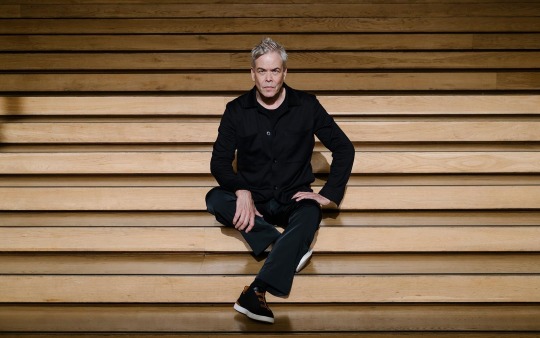
0 notes
Link
“With musicians, I don’t differentiate between the music they play and who they are as people. I’ve met a lot of musicians who have become very successful by talking about themselves, presenting themselves well, and who seem to have no experience with doubt— and, going further back, with musical dictators, who were successful because they forced everyone to follow their will. But I learned that music can only speak fully in freedom and love. It’s a thing you only experience with very few musicians, artists like Lars. We communicated about the darkest and most joyful things, and we experienced those same things in concert, without the protective layer, without the illusion of being invincible—we were totally vulnerable. For us as interpreters, I think, that’s the only approach that does justice to the composer. We’re not talking about ourselves; we must have enough empathy to follow Herr Brahms on his path.”
0 notes
Text
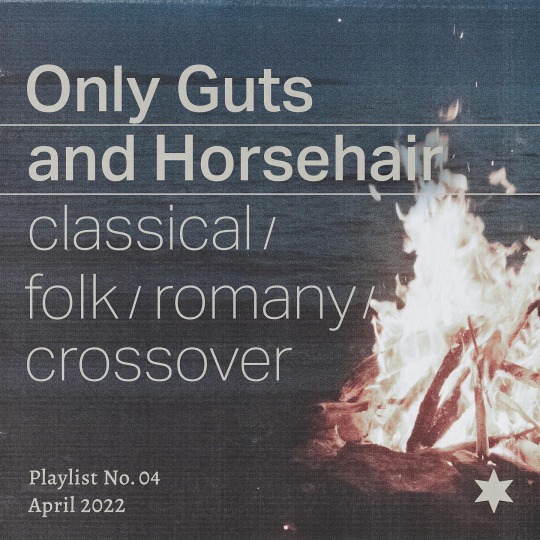
I’m bringing my playlists back!!
This playlist ist dedicated to the best thing Humanity has accomplished: bowed strings, or the careful balance of transferring soul via scratching horsehair over sheep intestines. For Redwine Thursdays and Weltschmerz Sundays.
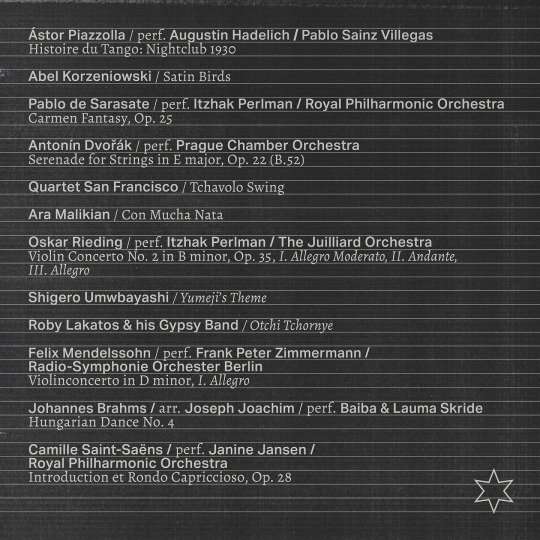
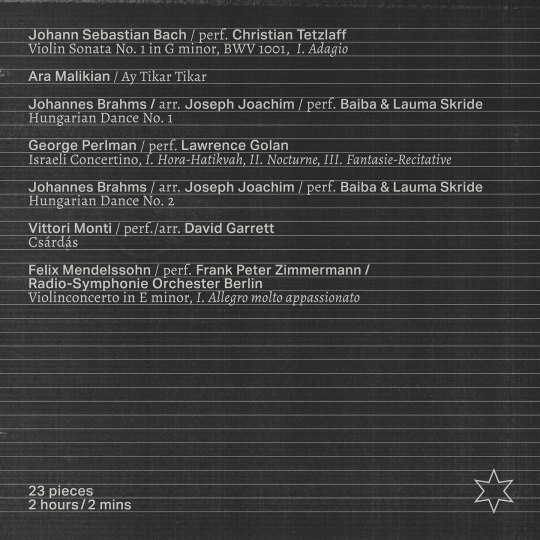
14 notes
·
View notes
Text
my process of enjoying classical music is really just finding the performer who interprets music in my favorite manner and then listening to them for the rest of time
#sure favorite composers are great but favorite performers? unmatched experience#could yell about classical music for hours#just found my favorite violinist in the form of christian tetzlaff#still have to hash out my favorite pianist#i'm picky about my classical music sue me#i will lose my mind over a single well crafted phrase#quinn just yells#delete later
25 notes
·
View notes